PowerPoint 2013 -
Managing Slides

PowerPoint 2013
Managing Slides


/en/powerpoint2013/applying-transitions/content/
As you add more slides to a presentation, it can be difficult to keep everything organized. Fortunately, PowerPoint offers tools to help you organize and prepare your slide show.
Optional: Download our practice presentation.
PowerPoint includes several different slide views, which are all useful for various tasks. The slide view commands are located in the bottom-right of the PowerPoint window. There are four main slide views:
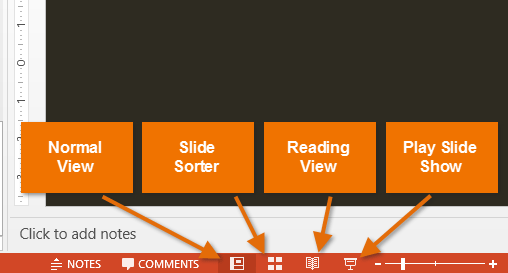 The different slide view commands
The different slide view commands Normal View
Normal View Slide Sorter
Slide Sorter Reading View
Reading View Playing a slide show
Playing a slide showOutline view shows your slide text in outline form. This allows you to quickly edit your slide text and view the content of multiple slides at once. You could use this layout to review the organization of your slide show and prepare to deliver your presentation.
 Clicking the Outline View command
Clicking the Outline View command Editing an outline
Editing an outlineYou can add notes to your slides from the Notes pane. Often called speaker notes, they can help you deliver or prepare for your presentation.
 Clicking the Notes command
Clicking the Notes command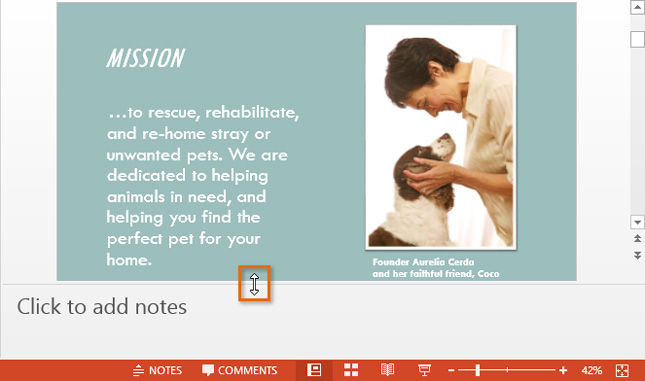 Resizing the Notes pane
Resizing the Notes pane Adding notes
Adding notesYou can also access Notes Page view to edit and review your notes. Just click the Notes Page command from the View tab. From there, you can type notes in the text box below each slide.
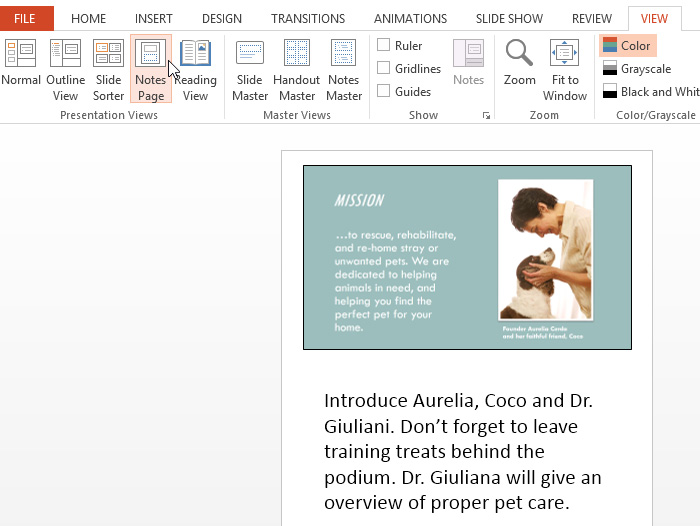 Notes Page view
Notes Page view
If you have a lot of slides, you can organize them into sections to make your presentation easier to navigate. Sections can be collapsed or expanded in the slide navigation pane and named for easy reference.
In our example, we will add two sections: one for dogs that are available for adoption, and another for cats and other pets.
 Selecting a slide to begin a section
Selecting a slide to begin a section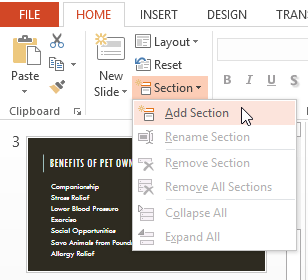 Clicking Add Section
Clicking Add Section A newly created section
A newly created section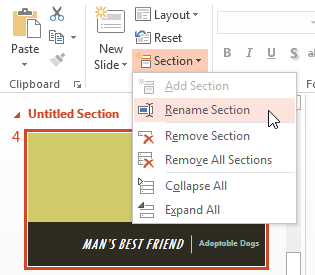 Clicking Rename Section
Clicking Rename Section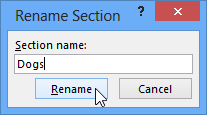 Renaming a section
Renaming a section Collapsing a section
Collapsing a sectionTo remove a section, click the Section command, then click Remove Section. You can also click Remove All Sections to remove all sections from your slides.
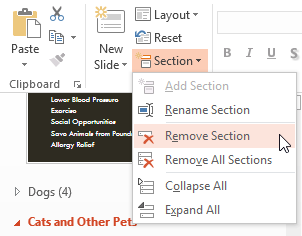 Removing a section
Removing a section
/en/powerpoint2013/printing/content/